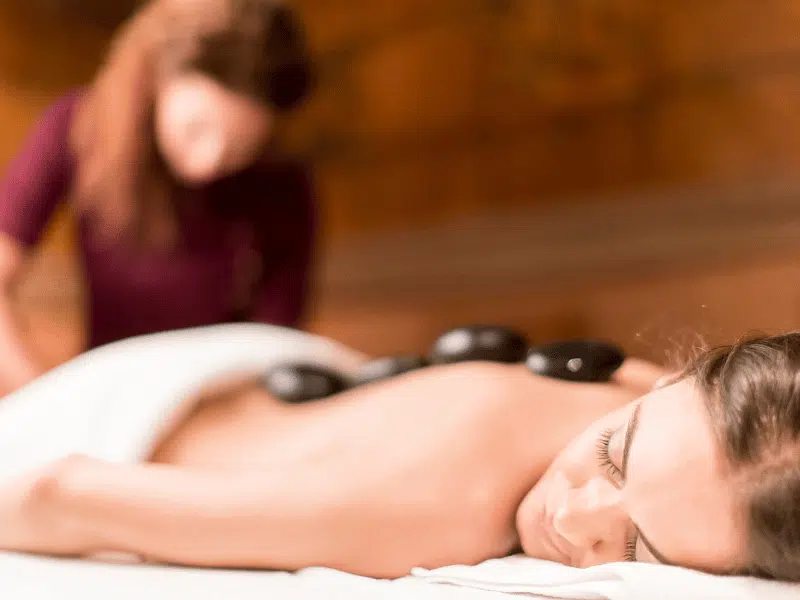The spa has always been more than just a place. It’s a presence—a pause, a collective exhale, a quiet act of resistance against the demands of modern life. However, as wellness evolves, the spa’s role is being reimagined.
It’s no longer just about unplugging; it’s about upgrading. Today’s wellness culture demands more than relaxation. It craves transformation, optimization, and deep cellular renewal. Now, spas face a pivotal choice.
Will it remain a beautiful escape or become a spark for human potential?
This is where biohacking steps in—not as a passing trend, but as a true opportunity. Surprisingly, spas have a unique edge to lead this shift if they choose to evolve. They already understand the body, create spaces that foster change, and earn deep client trust. What’s needed now is a new lens, and a new language. One that speaks not only to relaxation and aesthetic care, but to expanded well-being.
What biohacking really means
(and why spas are already doing it, quietly)
First, let’s explain: biohacking isn’t just about high-tech gadgets or gene editing. At its core, biohacking is simply self-guided biological improvement. It’s about understanding how the body works and using certain tools such as nutrition, light, temperature, pressure, sound, breath, or data to help it function better.
In many ways, this mirrors what spas have done for decades.
Consider hot stone massage. That’s thermotherapy. Aromatherapy? That’s scent-based stimulation for the nervous system. Hydrotherapy uses water to activate circulation and calm the body. Even a basic foot soak with deep breathing offers a layered sensory experience.
So, what’s different? Traditionally, spas have presented these therapies as indulgences, not as functional boosts. That distinction is changing—and it needs to.

Why now: the shift from escape to enhancement
Today’s wellness consumers are looking for more than temporary relief. Instead, they want tools and experiences that help them perform better in daily life.
They’re tracking their sleep cycles. They care about how fast their cells are aging. Many check wearable data before making lifestyle choices. What used to seem niche is now becoming the norm.
Meanwhile, the spa industry is still focused on promoting seasonal body wraps and 90-minute facials.
Clearly, the future lies in bringing together the sensory depth of spas with the personalized, data-informed approach of biohacking. In other words, we need to shift from the idea of spa-as-retreat to spa-as-performance-support—where every service is crafted to help clients feel better and function better.
The new spa language: ritual meets precision
Now, picture a spa that organizes services by outcome—not by treatment type. For example:
- Resilience Rituals designed to build stress tolerance and support nervous system regulation.
- Cognitive Clarity Protocols aimed at focus, productivity, and burnout recovery.
- Metabolic Reset Experiences built around glucose levels and hormone patterns.
- Circadian Calibration Journeys that use light, temperature, and grounding to reset internal clocks.
Furthermore, a facial is no longer described as “anti-aging.” Instead, it’s a cellular energy session featuring red light therapy, lymphatic activation, and adaptogenic botanicals to support natural energy production and skin renewal.
This isn’t science fiction. It’s already happening in next-generation wellness spaces like modern recovery centers, integrative health clinics, and bio-optimization studios that combine data, advanced therapies, and personalized care.
Spas, on the other hand, are still inching forward when they could be leading.

Untapped biohacking uses
So, where can spas go from here? Quite a few places, actually. Let’s explore the possibilities:
1. Precision recovery labs
- Recovery areas with compression therapy, PEMF mats, or vibration platforms.
- Guided breathing sessions enhanced with HRV (Heart Rate Variability) tracking.
- Self-guided neuro stimulation pods for nervous system recalibration.
2. Data-informed personalization
- Client onboarding with wearable data integration like Oura, WHOOP and CGM (See this article from Skin Inc. on how wearables are already being used in spas to personalize treatments).
- Facials, detox treatments, and massages adjusted based on real metabolic needs.
- Treatments tailored to biological age or skin microbiome—like rejuvenating protocols for accelerated aging, or microbiome-balancing facials using pre- and post-biotics.
3. Hormonal and chrono-biological alignment
- Menstrual-cycle-based services tailored to support hormonal shifts, energy levels, and skin changes throughout the month.
- Circadian-friendly lighting and time-aware services: treatment environments that use dynamic lighting to support natural sleep-wake cycles, combined with service offerings intentionally scheduled to align with the body’s needs throughout the day (think morning protection, afternoon recharge, evening recovery).
- Therapies that consider cortisol curve, melatonin onset, and glymphatic function.
4. Cognitive + emotional biohacking
- Meditation sessions guided by EEG feedback, combined with craniosacral therapy for deeper nervous system regulation.
- Light and sound entrainment sessions designed to shift brainwaves and support emotional balance.
- Nootropic tea ceremonies enhanced by real-time feedback blending botanicals for focus or calm while tracking how the body responds in the moment.

Designing the biohacking spa: a living ecosystem
This isn’t about stuffing a spa full of machines. Rather, it’s about reimagining how the spa operates at every level:
- Architecture: Design that uses natural light, calming materials, circadian-friendly lighting, EMF-aware layouts, and soothing soundscapes.
- Touchpoints: Each client journey guided by insight and intention—not assumptions.
- Business Models: Memberships that focus on optimizing biology and well-being—not just access to treatments.
Ultimately, the goal is to create a spa that’s alive—a place where clients don’t just unwind; they evolve.
The spa professional: becoming a bio-wellness guide
Of course, this shift means rethinking what it means to work in a spa.
We need professionals who can understand wellness data, spot what’s really behind a client’s surface-level issues, and offer support with care and compassion. That means learning new skills, updating certifications, and most of all: staying curious.
Tradition can guide us, but it shouldn’t hold us back.
Redefining wellness: will you lead the way?
What if we stopped seeing spas as indulgent escapes and started leading with their true power?
Spas can be so much more: everyday sanctuaries for regeneration, resilience, and real well-being. Places where beauty is functional, where rituals are rooted in science, and where wellness becomes a daily, intentional practice.
This isn’t just a possibility. It’s already taking shape.
Now the question is: will you be one of the professionals who helps shape what’s next?
Because the future of wellness isn’t waiting. And neither should we.
Interested in learning more? Grab your free spa biohacking kit in this link.
Curious how this evolution impacts the everyday work of estheticians and therapists? I dive into that personal, human side in my companion piece on Medium.

